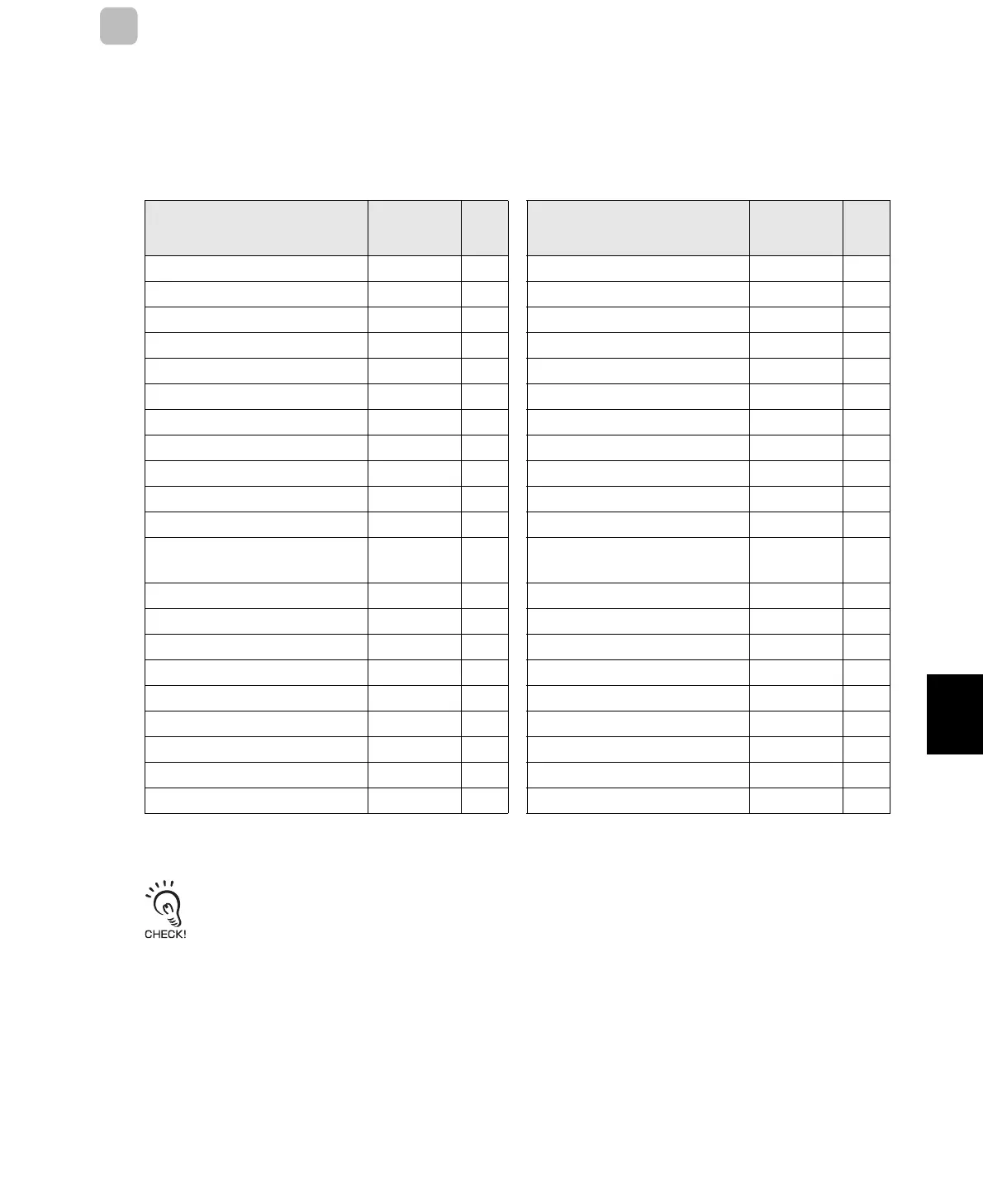Section 8
Chemical Resistance of the Reader/Writers and RF Tags
Chemical Resistance of RF Tags
Applicable Models
V680-D1KP54T/-D1KP66T/-D1KP66MT/-D1KP58HTN/V680S-DKF6
PPS resin is used for case material. Refer to the following lists and do not use chemicals that affect
PPS and epoxy resin.
RF Tags cannot be used in applications with explosion-proof specifications.
The above table shows the extent of changes in PPS resin exposed to each chemical at room temperature and at 90C.
If actual chemicals, concentrations, and temperatures are different from those shown in the tables, always conduct tests
under the actual conditions in which the RF Tags are to be used.
Chemical
At room
tempera-
ture
At
90C
Chemical
At room
tempera-
ture
At
90C
Hydrochloric acid
37% A A
Sodium hypochlorite
AA
10% A A
Phenol solution
5% A A
Sulfuric acid
98% A B
Glacial acetic acid
AA
50% A A
Acetic acid
AA
30% A A
Oleic acid
AA
3% A A
Methyl alcohol
95% A A
Nitric acid
60% B C
Ethyl alcohol
95% A A
40% A B
Ethyl acetate
AA
10% A A
Sebacic acid diethylhexyl
AA
Hydrogen fluoride solution
40% B B
Acetone
AA
Chromic acid
40% A A
Diethyl ether
AA
Hydrogen peroxide solu-
tion
28% A B
n-heptane
AA
3% A A
2-2-4 trimethylpentane
AA
Sodium hydroxide solution
60% A A
Benzene
AA
10% A A
To lu en e
AA
1% A A
Aniline
AA
Ammonia solution
28% A B
Mineral oil
AA
10% A B
Gasoline
AA
Sodium chloride
10% A A
Insulating oil
AA
Sodium carbonate
20% A A
Dichloroethylene
AA
2% A A
Carbon tetrachloride
AA
A: Has no adverse effect, B: May cause discoloration, swelling, etc., C: Causes deformation, cracks, etc.

